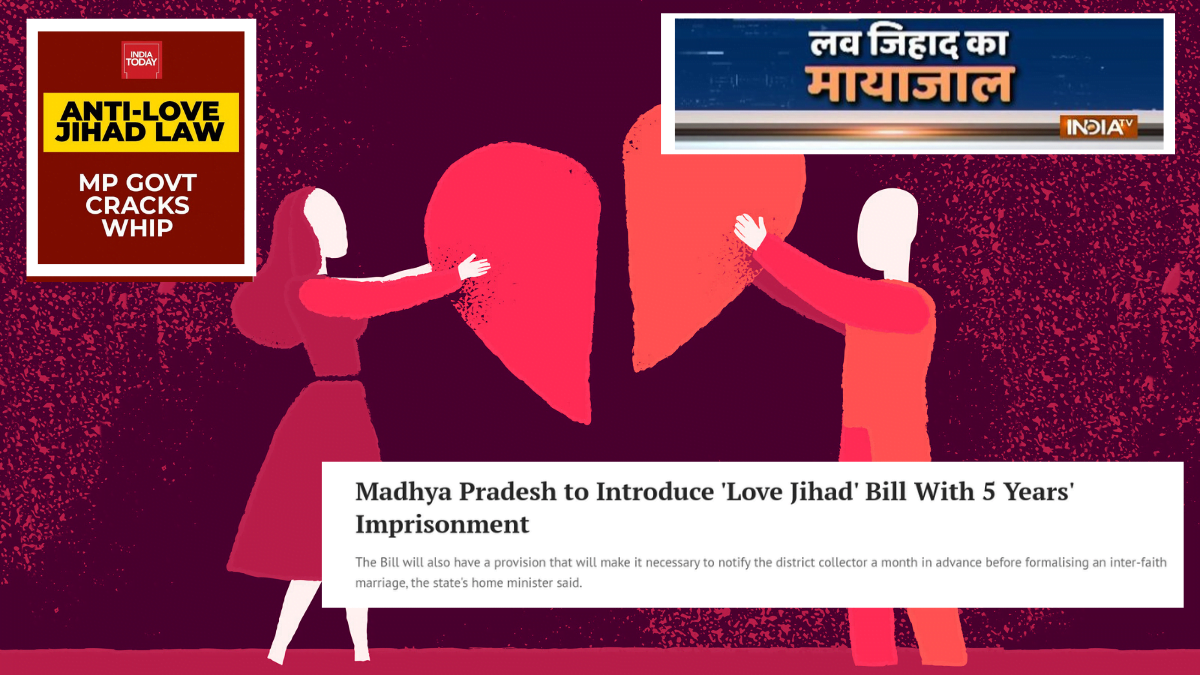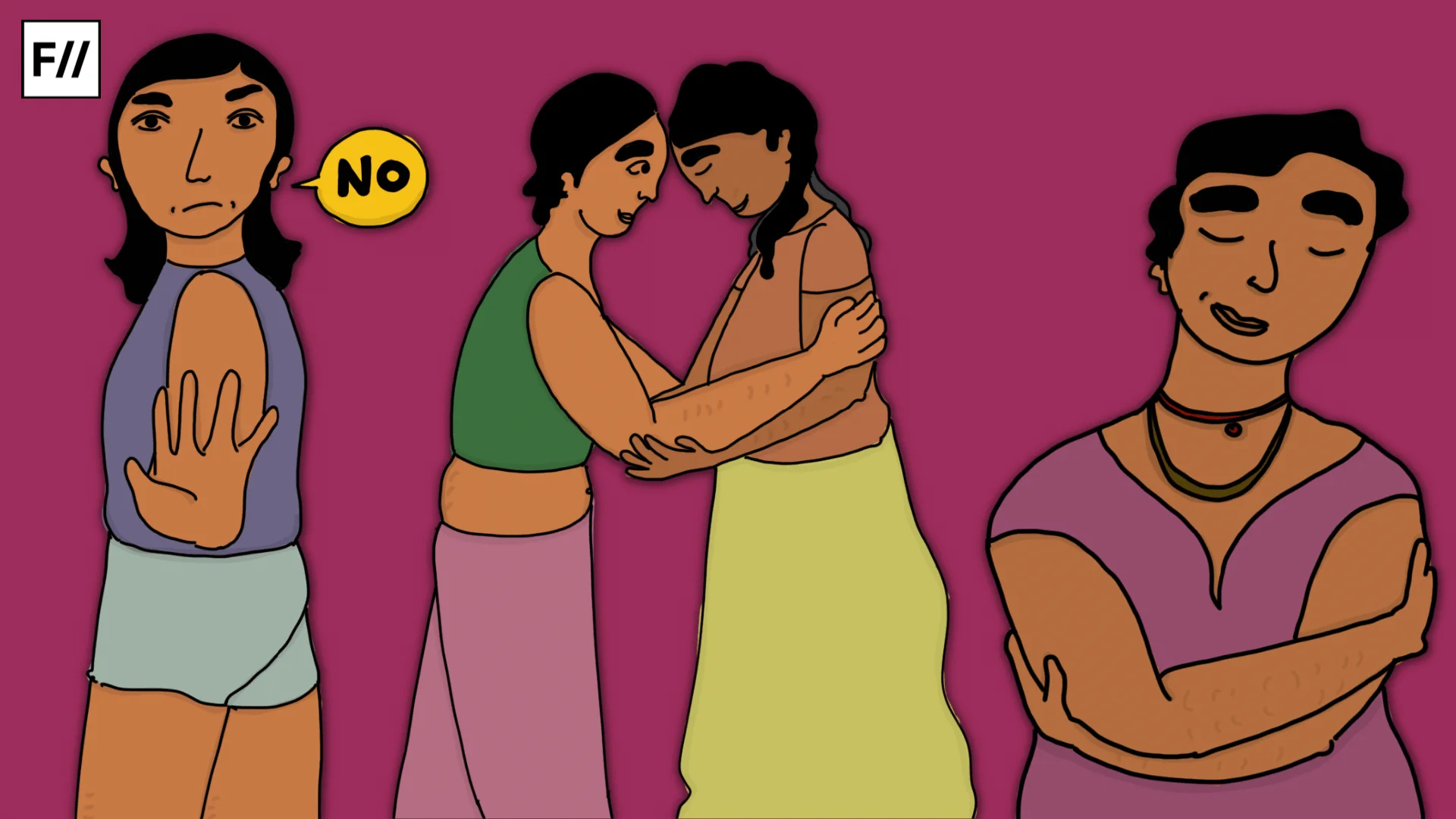Recently, Netflix released the first season of A Suitable Boy by Mira Nair based on Vikram Seth’s novel of the same name. Lata, the young, outspoken and rebellious protagonist falls in love with the handsome and passionate Kabir Durrani, the Muslim boy in the college campus. The frantic search for the suitable boy commences with Lata’s mother leaving no stone unturned to get Lata away from Kabir. Raging in love, Lata is eager to elope with Kabir but towards the end settles for a man more stable and of her own faith. Kabir is left in the lurch with the more sordid background of Hindu-Muslim riots. The systematic alienation of Kabir Durrani from Lata’s life, despite being her first love interest, is the many ways in which intercaste and interfaith marriages are avoided, averted and aborted.
Ostensibly Lata’s rejection of Kabir Durrani is not on the basis of religion, yet it is manifested in the uncertainty and instability that she undergoes while being with Kabir plotted by the narrative conspiracy of unconvincing silence imposed on Kabir Durrani akin to a mute spectator. The near ostracisation of the interfaith couples especially Hindu and Muslim couples looms large in the minds of girls like Lata who are rooted and committed to their family, the very few who dare to love are hauled and haunted by the twin forces of state and court.
Set in the 1950’s, A Suitable Boy touches the nerve and mirrors the society in 2020. The war cry against love jihad, an erroneous term with the Chief Minister of UP, Yogi Adityanath announcing death (Ram Naam Satya Hai Journey) as a punishment for love jihad, many Lata’s would be forced to leave their Kabir Durrani. This false narrative around love jihad is echoed in other states like Haryana and Madhya Pradesh in the name of saving ‘Hindu women’ from Muslim men. Sadly, the National Commission for Women, a body that is conceived to protect the rights and dignities of women yielded to the chicanery of love jihad instead of zealously safeguarding the decisions and choices made by young asserting women in the matters of love or religion.
‘The course of true love never did run smooth’
However, inter caste and interfaith marriages are not uncommon despite the current furore over it and many don’t require any conversion to either religion because religion is not a prerequisite for such relationships and that is the beauty of it. Some of the biggest Bollywood blockbusters are based on interfaith love stories especially between Hindu and Muslim, like Bombay, Veer Zara, My name is Khan, Ishaqzaade, Ek tha Tiger, Ranjhanaa and most recently Kedarnath only to reflect the society where different religions coexisting for many centuries will inevitably blossom into relations like marriages.
It is a natural phenomenon with globalisation diffusing boundaries in a seamless exchange between communities with the relative independence/mobility and education of women. Article 25 of the Constitution allows every person freedom of conscience and the right to profess, practice and propagate religion. Freedom to change religion or to choose a life partner are individual rights defined by their experiences and preferences, the state cannot and should not interfere in the personal choices and decisions of an adult individual in the name of love jihad.
Freedom to change religion or to choose a life partner are individual rights defined by their experiences and preferences, the state cannot and should not interfere in the personal choices and decisions of an adult individual in the name of love jihad.
Tanishq may have bowed down to the virtual lynching of interfaith love by the abusive army of love jihad trolls, but the truth is that many interfaith marriages are succesful and a living testimony to the negation of the idea of love jihad. In response, Dhanak an NGO promoting interfaith and inter caste marriages started #LoveAgainstHate campaign inviting interfaith couples to share their stories clearly contradicting the love jihad propaganda.
Most inter caste or interfaith marriages are born out of love and passion and are thus a great social equaliser, rejecting the narrow confines and prejudices of the society at large—they promote pluralism and heterogeneity. These marriages breed on mutual understanding and are a perfect recipe for a society still struggling with the malaise of dowry and bride burning and are thus important dynamics for social change.
Ambedkar, the one who has been instrumental in drafting the Indian Constitution, in his seminal undelivered speech, “Annihilation of Caste” endorses and strongly advocates inter caste marriage. Ambedkar’s views on marriage as potent means of intermingling and assimilating the caste barriers is crucial in dismantling the entrenched notions of pollution and purity and can be transported to the cohesive nature of interfaith marriages. “Fusion of blood alone can create the feeling of kith and kin,” Ambedkar asserts, as inter marriages can engender the kindred feelings and can act as a ‘binding force’ amongst different castes and religions.
Children born out of inter caste and interfaith marriages are then the true inheritors of the Indian values. Shaped and moulded by different religions and cultures, they are bound to be more resilient, reasonable, open minded and respectful of all religions. It seems that miscegenation of religion is a cure for all that ails our society today. And it is understandable why it irks the right wing so much—the dilution of religious supremacy will eviscerate any notion of Hindutva. It will in effect create more variants of Muslimness and Hinduism, breaking the binaries and thriving in the complexity of multiple ways of being.
“Let there be no compulsion in religion” [Al-Qur’an 2:256]
The above quote from Quran unequivocally condemns forceful conversion and fundamentally challenges the islamic validity of love jihad. While it’s true that Quran prohibits interfaith marriages with an exception to ahlul kitab (people of the book refers to Jews and Christians), it in no way advocates conversion for the sake of marriage. The vicious attack on interfaith love through the misappropriation of the term jihad is to malign Islam as a religion that allows forceful conversion, abduction, enforced marriage and rape of Hindu women. It is reminiscent of the 1920’s atrocious propaganda against Muslims with the slogans like “Hindu Aurton ki loot”, denouncing interfaith marriages as a planned conspiracy on the part of Muslims to increase their numbers.
Jihad in its purest form refers to a righteous struggle, and in one of the ahadith (Prophetic saying) taking care of old parents is a greater jihad than going to a war. In most literal sense, Jihad—an Arabic word—is from the root word of juhd which means effort or striving—the same root also gives another word ijtihad which means using one’s intelligence or to be diligent similarly mujahid is used many times in Quran for the emigrants from Mecca who were exiled and persecuted because of their religion.
“Those who believe, and suffer exile and strive…” (Q 9:20). In most Quran versus’s, Jihad is accompanied with patience and perseverance. Interestingly, jihad also comes in relation to disobeying parents. Since Islam accords greatest respect to parents and Quran advises people to not say even “uff”( Q 17:23) to your parents thus disobeying them if they force one to forgo Islam is nothing short of a jihad.
“But if they (your parents) strive (to force) thee to join Me (in worship) anything of which thou hast no knowledge, obey them not” (Q 29:8.). Unlike the word crusade (the war for the cross), jihad neither means holy war nor fight. In Quran, qital is the word for fighting and harb for war. And the reference to fight with respect to jihad is always defensive.
The deliberate distortion of jihad with terrorrism is the post 9/11 idiom of a perceived threat of global Islam. This hijacking of the term jihad and its misuse by the Hindutva brigade is to denounce inter faith marriages in order to add to the vitiating environment of Islamophobia and create a billigerent threat of Islam so much so that new laws are being framed to check interfaith marriages and target Muslim men for falling in love with a Hindu girl. Reinforcing the stereotypes about Muslim men as violent and lustful, this nefarious propaganda is one among the many (ghar wapasi, shuddhi and most recently UPSC jihad) with the sole objective of polarising the society on communal grounds.
Saving Hindu Women, Bharat Mata ki Jai!
Underlined with this divisive discourse is also a reductive assumption that women lack agency and their decision is always provoked, manipulated or in other words brainwashed. The Mission Shakti campaign undertaken by U.P govt in the wake of Hathras gangrape for gender sensitisation and awareness programme will remain hollow unless women are allowed to exercise the freedom and agency to be truly self reliant. The most dangerous presumption behind the discourse of Love Jihad is the objectification of women where women are not seen as an end in themselves but are corollary to the shame and honour of the family, community, tribe and even nation.
As Martha Nussbaum argues, “The objectification of women is primarily a denial that women are end in themselves. It is because one has already made that denial, at some level of one’s awareness, that it becomes so easy to deny women autonomy, to deny that their subjective experience matters, and, even, to begin to ignore qualiltative differences between one and another, as pornography so easily does.”
One can easily locate this objectification in the larger Hindu patriarchal discourse on nationalism. Unarguably Hindutva is engineered by mobilising the aggressive nationalism using the body of Hindu woman as an embodiment of Bharat Mata, for this reason, the figure of mother India is often invoked in jingoistic high decibel war tropes (against Pakistan) with the rhetoric of salvaging her honour, not surprisingly even the geographical contours of the Indian subcontinent are projected in the body of a Hindu female goddess.
With the Hindutva feminisation of the Indian nationhood, Hindu female body transforms into a nonsexualised territory of male soverignity. The body becomes a site/sight on which rituals are enacted (like widow’s shaving off head) in what Butler would describe as ‘gendered performativity’ capturing the national imagination.
Contrastingly, Muslims as ‘others’ are seen as plunderers often compared with the skewed historical accounts of ‘Mughal invaders’. Visualised as a goddess and mother, Vande Mataram becomes a national song where the national aspirations are projected, proclaimed and preserved on the Hindu female body. And lately ‘Bharat Mata ki Jai’ as a slogan has become a litmus test into proving one’s patriotism.
Also read: Politics Of ‘Love Jihad’: Why Consent And Agency Need A Voice…
M.A Mubarki confirms, “Women’s bodies [were] deemed the repositories of men’s honour, the community’s morality, and the nation’s territorial integrity, which were subjected to brutal violence both sexual and otherwise, since as a symbol of lineage and purity, women’s bodies once violated sexually would purportedly designate the entire collectivity as dishonoured and shamed.”
With the Hindutva feminisation of the Indian nationhood, Hindu female body transforms into a nonsexualised territory of male sverignity. The body becomes a site/sight on which rituals are enacted (like widow’s shaving off head) in what Judith Butler would describe as ‘gendered performativity’ capturing the national imagination.
Thus, one can contend that love jihad emanates from the Hindu male fear of emasculation as it endangers Hindu male’s inalienable rights and control over Hindu female body and sexuality. Central to this toxicity is also the institution of marriage which is governed by social regulations, religious practices and state policies. The deinstitutionalisation of marriages through interfaith and inter caste union in some limited ways ceases to use women as means of preserving reproductive purity of race and religion.
Jab Miyan Biwi Razi toh kya Karega Qazi?
The Kerala High Court’s infamous verdict on the much publicised love jihad case where the marriage of 24 year old adult Hadiya (converted to Islam) was termed as a ‘sham’ and pronounced Hadiya as ‘weak’ and ‘vulnerable’ was ordered to be send back to her parents’s custody. The court questioned the conversion of the girl attributing it to radical Islam with NIA investigating the conversion. The role of the court in the recent love jihad cases in Kanpur has also been dismissive of female autonomy.
Regrettably, the Allahabad High court intervention in interfaith marriage of Faisal and Shalini/Fiza has been disheartening where legally married couples are treated as criminals, recognising parents as custodian of girls and undermining the girl’s choice and freedom. In an interview by NDTV, Shalini’s mother can be seen as commented “iss type ke ladke dikhte hain yeh” (“type” refers to enforced prostitution of Hindu girls through love jihad) while Shalini/Fiza replied “kya main baby girl hun” asserting her will and independence to marry.
The court failed in championing the individual rights to consciousness by questioning the validity of faith and conversion in inter faith marriages. Embedded in the failure of the Special Marriage Act (1954) is the lack of political will to promote or protect interfaith relationships. The operational constraints with its 30 days notice period to solemnise the interfaith or inter caste marriage has been counterproductive making many interfaith couples opting out of Special Marriage Act.
Thus, many decide to convert to either religion for the sake of marriage which is their sole prerogative and absolute freedom enshrined in the Constitution. Why must state or the court scrutinise the depth and knowledge of the faith converted to sanctify the conversion like a priest? Not only is this specious argument an infringement of the fundamental right and liberty but it also unwittingly gives credence to the honour crimes often committed by the family and in some extreme cases even resorting to killing in the name of honour.
Also read: Why ‘Love Jihad’ Is An Attack On Women’s Rights
Nitika/Khadija kept her conversion to Islam a secret for three years before she married a Muslim boy. Khadija maintains that she ‘reverted’, a term she insisted instead of conversion after reading the Quran. As an adult, Khadija confirms her ‘ijtihad’ contrary to love jihad. She explains that the Muslim boy she married was least religious and it’s due to her now that he has started praying. Surely the dominant discourse on love jihad fails to capture this beautiful love story. As is evident each relationship is unique and in the face of love, the logic of love jihad fizzles into bubbles without any substance, because it is love actually.
References:
- The Hindu
- Ambedkar, B.R. (1979): “Annihilation of Caste“.
- Chapter (9) sūrat l-tawbah (The Repentance) of Quran
- “And your Lord has decreed that you not worship except Him, and to parents, good treatment. Whether one or both of them reach old age [while] with you, say not to them [so much as], “uff,” and do not repel them but speak to them a noble word”. (Sura Isra)
- Chapter (29) sūrat l-ʿankabūt (The Spider) of Quran
- Nussbaum, C. Martha. (2007) “Rape and Murder in Gujarat: Violence Against Muslim Women in the Struggle for Hindu Supremacy” in Amrita Basu and Srirupa Roy (eds.) Violence and Democracy in India, Calcutta: Seagull.
- Meraj Ahmed Mubarki, “Exploring the ‘Other’: inter-faith marriages in Jodhaa Akbar and beyond,” In Contemporary South Asia 22, 3 (July 2014): 258.
About the author(s)
Dr. Amina Hussain is working as an Assistant Professor at Khwaja Moinuddin Language University with the Department of English and Modern European and Asian Languages, Lucknow. She has also taught as an Assistant Professor at Amity University, School of Languages, Lucknow. Recipient of a Medal and Certificate of Merit for securing first position in Sri Venkateswara College, Delhi University in M.A (English Hons). She has also been a UGC-NET-JRF (Junior Research Fellow) with the University of Lucknow, Uttar Pradesh.




